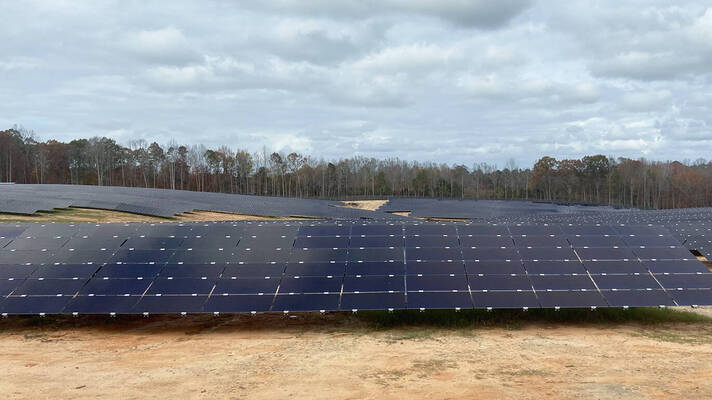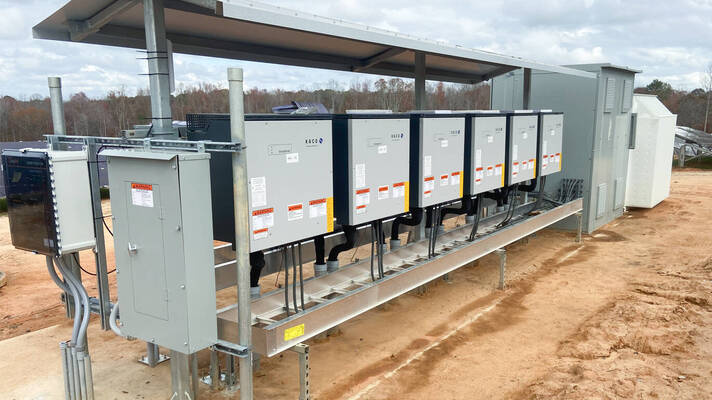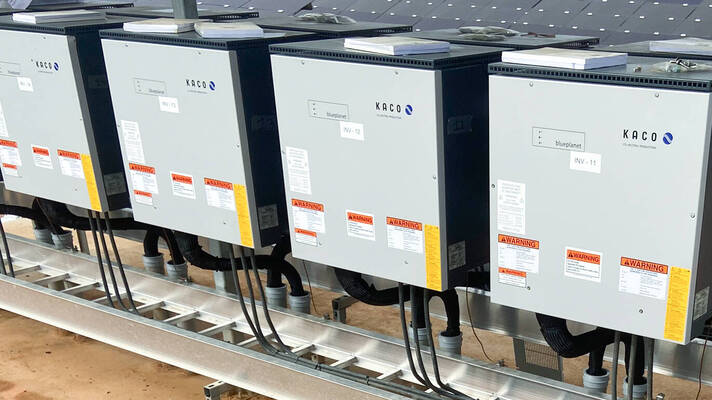The Mitchell Portfolio constructed in North Carolina consists of twelve projects each about 5 MW in size. The first six projects were commissioned end of 2020 with the remainder coming online in 2021. These projects are located in the hearts of communities surrounding the Raleigh and Charlotte metropolitan areas as well as projects near the coast. With a noise emission rating of 59.2 db the chosen inverters are by far among the quietest in the market - one of the reasons why they are ideally suited for community solar plants. Each pad contains eleven of the blueplanet 150 TL3 inverters with three pads on each site.
Clean energy for 18,000 homes
The Virtual Central inverter racks can come in either kits to be assembled on site, or fully integrated solutions including inverters, racks, AC cable trays, and panelboards to help accommodate expeditious install. Due to the less than five inches of horizontal clearance space required between inverters, it’s one of the most compact and cost-effective solutions on the market. No need for fully integrated string inverter skids saving manufacturing time and money.
The inverters come in 480Vac, 600Vac, and 600+Vac solutions which allow for a variety of cost-effective applications.
The projects are part of a long-term Power Purchase Agreement with Duke Energy. The total portfolio of 90 MW will provide power for the equivalent of about 18,000 homes while also raising the property tax base for local communities.
Virtual Central approach reduces costs and increases yield
The virtual central design offers a variety of advantages, including flexibility of design on the array due to the single DC inputs and customer selected combiner configurations not constrained by limited current capacity of distributed multi-MPPT inverters. The single-MPPT inverters by KACO new energy can accept up to 600kcmil copper or aluminum cables landed on the DC bus which can accommodate either the DC combiners used on this site or aluminum cable trunking systems seen in the market today.
With the inverters installed so closely to the MV transformer and coupled to the adjacent switchboard (options for rack mounted panelboards available) this eliminates the need for AC disconnects on the inverters. This also reduces the losses or increase in cabling cost seen by 800Vac inverters installed in a distributed topology. Power losses stay on the DC-side and a highly efficient energy transport from the array at 1500VDC can take place. Thanks to this, and due to the superior efficiency of up to 99.2%, the made in Germany single-MPPT inverters can provide higher yield than conventional systems. Since less cables are required for this design, the investment costs for the Balance of System can be reduced by about 9%. This leads to overall reduced investment costs.
To sum it up, the Virtual Central approach reduces investment costs, ensures higher yields and is an absolute ease for operating and maintenance activities.




